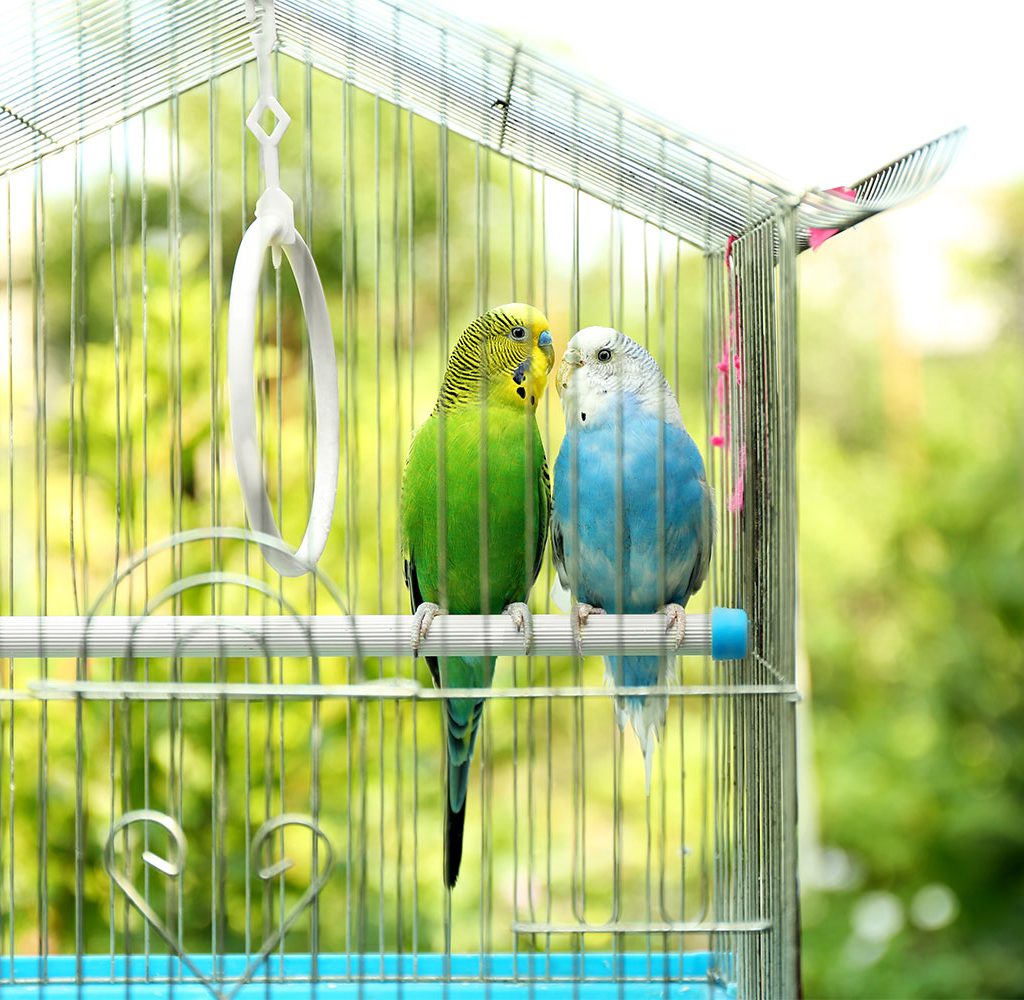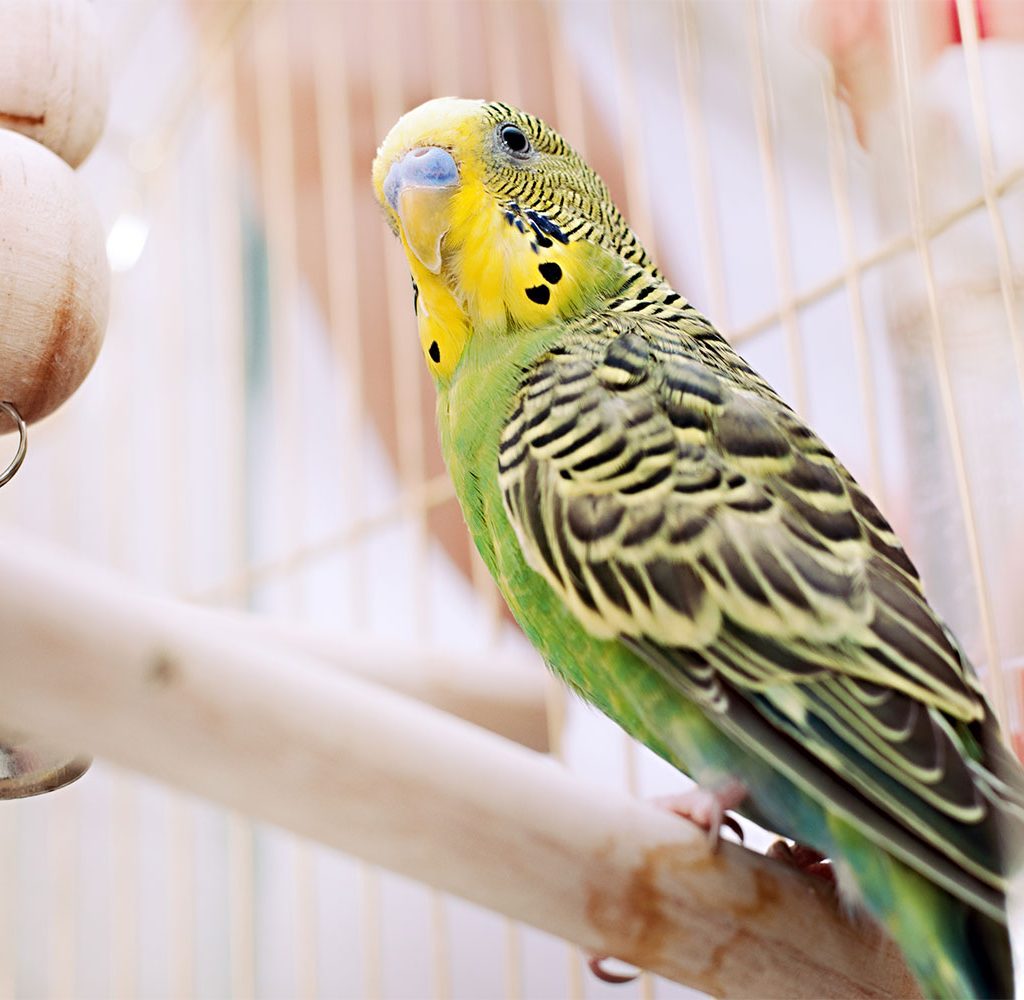Your bird’s health depends a great deal on the state of its cage. Without regular cleaning, your bird is in danger of infections and developing chronic conditions that could be detrimental for the rest of your bird’s life. Clean that cage to ensure your bird has the best chance for health and well-being.
But how often should a birdcage be cleaned? Should you break down the entire thing each day or once a week? Let’s take a look at why you need to clean your bird’s cage, how often to do things like changing the liner, and a realistic schedule for keeping your bird’s home healthy and safe to live in.

How to clean a bird cage
Cleaning the cage is vital. Establish a routine that will help you stay on top of cage maintenance and help ensure your bird is living its best life. Regular, routine cleanings ensure that cleaning the cage isn’t an all-day affair and that your bird’s environment is always optimal for health.
Daily tasks
You must change the paper liner every day. Not only does your bird have trouble walking on dropped food, droppings, and debris from toys, but a dirty liner makes it difficult to gauge how much your bird is actually eating.
Newspapers make an excellent barrier for the bottom of the cage, and if you’ve layered the papers correctly, you’ll only have to change the top sheet every day. Make sure nothing has soaked through other layers, or you’ll need to replace those, as well.
You should change the water bowl and food bowl daily to ensure that everything is fresh. Wash the bowl and the water bottle with hot soapy water and allow them to dry completely before reattaching. Check toys and enrichment products for cracks or wear and tear that isn’t safe and discard those.
Vacuum underneath your bird’s cage to remove debris and check spots for moisture. If you allow these things to pile up, you could risk your bird’s health even outside the cage. The sensitive respiratory system of birds won’t tolerate wet, moldy conditions even underneath the cage.
Weekly tasks
Once a week, if you haven’t had to change all liner layers, it’s time to toss out the entire thing and start fresh. Remove all the paper liners from your bird’s cage and discard them. Gently clean the bottom of the cage with a disinfectant to remove mold or bacteria and allow it to dry completely.
Clean all toys thoroughly with dish soap or place appropriate ones in the dishwasher for sanitizing. Inspect the cage carefully for issues and remove any stuck-on bird waste using steel wool or sandpaper.
Allow the cage to dry thoroughly and rebuild the liner using fresh paper or newspaper. Avoid liners with colored ink because this can be hazardous to your bird. Weekly deep cleanings help ensure nothing gets out of hand in the cage.

Cleaning tips to make things easier
- Daily cleaning is vital to the health of your bird, so let’s look at some ways you can make your cleaning routine easier and more convenient.
- Liners — You don’t need fancy paper liners, newsprint will do. If you aren’t worried about how much you’re spending on paper liners, you won’t be as hesitant to chuck soiled lining every day.
- Rolling trash cans — Having a small rolling trash can or container makes it much easier to go through and clean what you need to daily. You’ll be able to quickly discard what’s old and used up and move on.
- Cleaning tote — Put all your bird-safe disinfectants and replacement parts in a single tote so you always know where they are. When you clean, you’ll have everything you need to keep your bird’s cage spotless.
- Build a routine — Much like your morning coffee or brushing your teeth, daily cleanings of your birdcage should be part of your routine. Set a certain time to clean the cage and stick to it so you don’t forget or are tempted to skip. Same with weekly cleanings — disinfect the cage on trash day, for example.
- Consider your birds — If you have more than one bird, you may need to adjust the frequency you change liners or clean based on your bird’s environment and habits. Always stay flexible for the health of your bird.
How often should a birdcage be cleaned?
The answer will depend on your bird — how many you have, your bird’s habits individually, and the type of environment you have. One thing you can do to ensure your bird’s cage is always in top shape is to change the top liner every single day.
Set a time to change the liner daily at the same time so it becomes a habit. Your bird’s health and well-being depend on a clean environment, so give your bird the best chance at health and happiness by taking the time and managing the little things.


